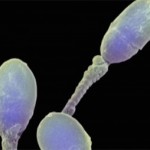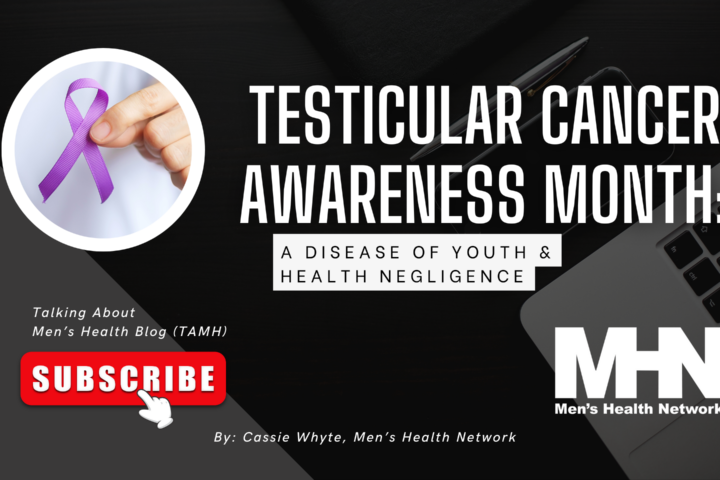Testicular cancer is the most prevalent type of cancer in younger men, aged 15 through 35. Luckily with early detection and treatment, about  96-99 percent of patients with testicular cancer survive this diagnosis and remain cancer free for 5 or many more years after. Even when testicular cancer is caught in more advanced stages, the cure rate is still very high. Although testicular cancer is relatively curable, treatment can still be a difficult decision. Should I be doing surgery? Radiation? Chemotherapy? Sometimes it can be difficult to decipher what the best treatment option is for you.
96-99 percent of patients with testicular cancer survive this diagnosis and remain cancer free for 5 or many more years after. Even when testicular cancer is caught in more advanced stages, the cure rate is still very high. Although testicular cancer is relatively curable, treatment can still be a difficult decision. Should I be doing surgery? Radiation? Chemotherapy? Sometimes it can be difficult to decipher what the best treatment option is for you.
Radiation Therapy
Men with testicular cancer may have radiation after surgery if the cancer was not completely removed or if the cancer returns. Testicular cancer is still treatable if it comes back. Radiation treatment is not as affective for other types of testicular cancer. These are then treated with surgery to remove the testicles and lymph nodes, and chemotherapy.
Possible side effects of radiation: Fatigue, nausea, and diarrhea. Side effects improve after radiation is complete. Risk of side effects can also be reduced with a skilled doctor who gives the exact dosage and is extremely accurate in targeting and hitting the tumor during treatment.
Chemotherapy
Chemotherapy is usually given when testicular cancer has spread outside the testicles, to distant locations within the body. It is usually given for nine weeks or longer. Chemotherapy is effective in that it will ensure all the cancer cells have been killed. It is sometimes used in combination with surgery. The most commonly used chemotherapy combinations for testicular cancer are BEP: Blenoxane, Etopophos, or Vepesid, and Platinol, and EP: Etopophos or Vepesid and Platinol.
Possible side effects of chemotherapy: Hair loss, mouth sores, loss of appetite, nausea and vomiting, diarrhea, increased risk of infections, easy bruising or bleeding, and fatigue.
Stem Cell Transplantation
Stem cell transplantation is mostly used when a patient experiences a testicular cancer recurrence after having had a prior successful treatment.
Surveillance
Surveillance is most often used to monitor patients for early signs of a recurrence of testicular cancer. Doctors closely track a patient’s disease using certain exams and tests on a set schedule. No treatment will be given unless there is an abnormal change in the patient’s test results indicating the cancer has come back.
Surgery
Fortunately, for those with testicular cancer the answer is pretty straight forward. Typically, all testicular cancers, even more advanced cases, are treated with surgery. The type of surgery is called a radical inguinal orchiectomy, where the testicle containing cancer is removed completely. An incision is made above the pubic area and the testicle is removed from the scrotum (the sac containing the testicles).
One of the big questions on every man’s mind, especially heading into surgery, is “how will this affect my life”? On the up side, the removal of a testicle has no effect on a man’s ability to have sex or get an erection. One of the downsides is it may affect your ability to conceive children. With only one testicle, only half the sperm cells are being produced, decreasing fertility. If both testicles are removed, then fertility declines to nonexistent. Without the testicles to produce sperm cells, conception is not possible.
Additionally, if both testicles have been removed due to cancer, testosterone also declines and can Diagnosed with Testicular Cancer? Know Your Options cause the common side effects of testosterone deficiency. These include, loss of sex drive, erectile dysfunction, fatigue, hot flashes, and loss of muscle mass. Fortunately, testosterone can be replaced using gels, patches, or shots. In addition, men who need to have both testicles removed and plan to have children after surgery should visit a sperm bank to harbor their sperm cells.
Surgical Options:
- Orchiectomy: surgery to remove the testicle
- Retroperitoneal lymph node dissection: For some patients, especially with nonseminoma testicular cancer, the lymph node may also be removed.
- Nerve-sparing surgery: Surgeons use this to prevent nerve damage surrounding the retroperitoneal lymph nodes. By sparing the nerves, men can maintain normal erectile function after surgery.
- Reconstructive surgery: Men can have a prosthetic testicle implanted in the scrotum to replace the surgically removed testicle. The appearance and feel of the prosthesis is similar to a real testicle.



